Erol Gelenbe
Decentralized Online Federated G-Network Learning for Lightweight Intrusion Detection
Jun 22, 2023Abstract:Cyberattacks are increasingly threatening networked systems, often with the emergence of new types of unknown (zero-day) attacks and the rise of vulnerable devices. While Machine Learning (ML)-based Intrusion Detection Systems (IDSs) have been shown to be extremely promising in detecting these attacks, the need to learn large amounts of labelled data often limits the applicability of ML-based IDSs to cybersystems that only have access to private local data. To address this issue, this paper proposes a novel Decentralized and Online Federated Learning Intrusion Detection (DOF-ID) architecture. DOF-ID is a collaborative learning system that allows each IDS used for a cybersystem to learn from experience gained in other cybersystems in addition to its own local data without violating the data privacy of other systems. As the performance evaluation results using public Kitsune and Bot-IoT datasets show, DOF-ID significantly improves the intrusion detection performance in all collaborating nodes simultaneously with acceptable computation time for online learning.
Online Self-Supervised Learning in Machine Learning Intrusion Detection for the Internet of Things
Jun 22, 2023Abstract:This paper proposes a novel Self-Supervised Intrusion Detection (SSID) framework, which enables a fully online Machine Learning (ML) based Intrusion Detection System (IDS) that requires no human intervention or prior off-line learning. The proposed framework analyzes and labels incoming traffic packets based only on the decisions of the IDS itself using an Auto-Associative Deep Random Neural Network, and on an online estimate of its statistically measured trustworthiness. The SSID framework enables IDS to adapt rapidly to time-varying characteristics of the network traffic, and eliminates the need for offline data collection. This approach avoids human errors in data labeling, and human labor and computational costs of model training and data collection. The approach is experimentally evaluated on public datasets and compared with well-known ML models, showing that this SSID framework is very useful and advantageous as an accurate and online learning ML-based IDS for IoT systems.
Associated Random Neural Networks for Collective Classification of Nodes in Botnet Attacks
Mar 23, 2023Abstract:Botnet attacks are a major threat to networked systems because of their ability to turn the network nodes that they compromise into additional attackers, leading to the spread of high volume attacks over long periods. The detection of such Botnets is complicated by the fact that multiple network IP addresses will be simultaneously compromised, so that Collective Classification of compromised nodes, in addition to the already available traditional methods that focus on individual nodes, can be useful. Thus this work introduces a collective Botnet attack classification technique that operates on traffic from an n-node IP network with a novel Associated Random Neural Network (ARNN) that identifies the nodes which are compromised. The ARNN is a recurrent architecture that incorporates two mutually associated, interconnected and architecturally identical n-neuron random neural networks, that act simultneously as mutual critics to reach the decision regarding which of n nodes have been compromised. A novel gradient learning descent algorithm is presented for the ARNN, and is shown to operate effectively both with conventional off-line training from prior data, and with on-line incremental training without prior off-line learning. Real data from a 107 node packet network is used with over 700,000 packets to evaluate the ARNN, showing that it provides accurate predictions. Comparisons with other well-known state of the art methods using the same learning and testing datasets, show that the ARNN offers significantly better performance.
Random Quantum Neural Networks (RQNN) for Noisy Image Recognition
Mar 03, 2022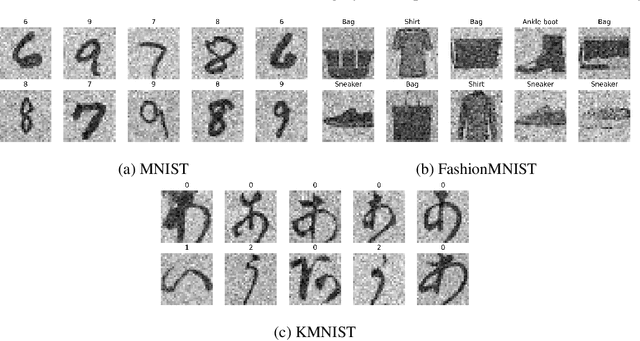

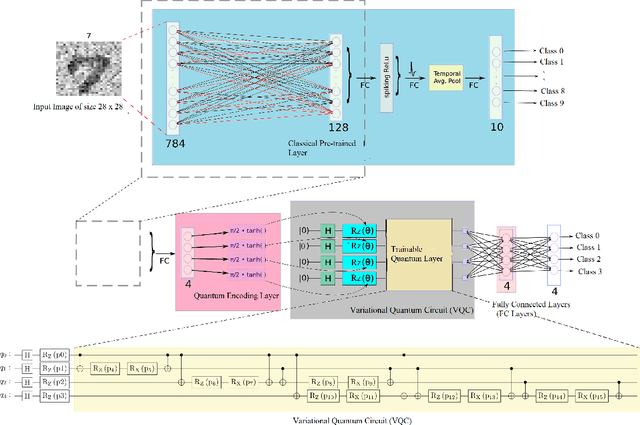

Abstract:Classical Random Neural Networks (RNNs) have demonstrated effective applications in decision making, signal processing, and image recognition tasks. However, their implementation has been limited to deterministic digital systems that output probability distributions in lieu of stochastic behaviors of random spiking signals. We introduce the novel class of supervised Random Quantum Neural Networks (RQNNs) with a robust training strategy to better exploit the random nature of the spiking RNN. The proposed RQNN employs hybrid classical-quantum algorithms with superposition state and amplitude encoding features, inspired by quantum information theory and the brain's spatial-temporal stochastic spiking property of neuron information encoding. We have extensively validated our proposed RQNN model, relying on hybrid classical-quantum algorithms via the PennyLane Quantum simulator with a limited number of \emph{qubits}. Experiments on the MNIST, FashionMNIST, and KMNIST datasets demonstrate that the proposed RQNN model achieves an average classification accuracy of $94.9\%$. Additionally, the experimental findings illustrate the proposed RQNN's effectiveness and resilience in noisy settings, with enhanced image classification accuracy when compared to the classical counterparts (RNNs), classical Spiking Neural Networks (SNNs), and the classical convolutional neural network (AlexNet). Furthermore, the RQNN can deal with noise, which is useful for various applications, including computer vision in NISQ devices. The PyTorch code (https://github.com/darthsimpus/RQN) is made available on GitHub to reproduce the results reported in this manuscript.
Deep Learning in Multi-Layer Architectures of Dense Nuclei
Sep 29, 2016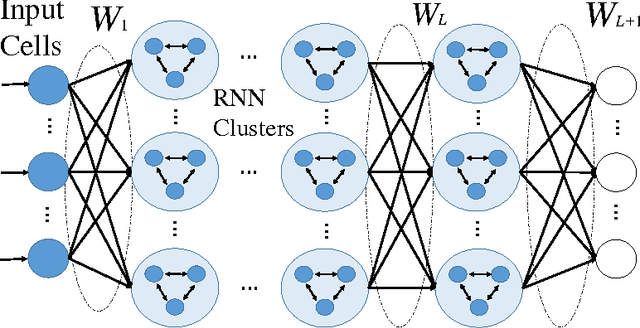
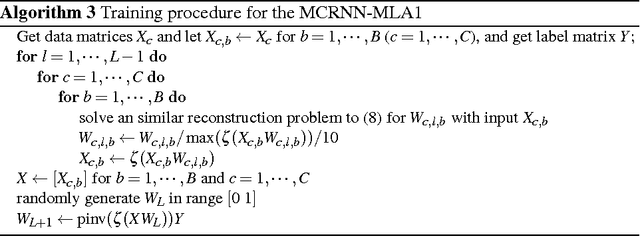
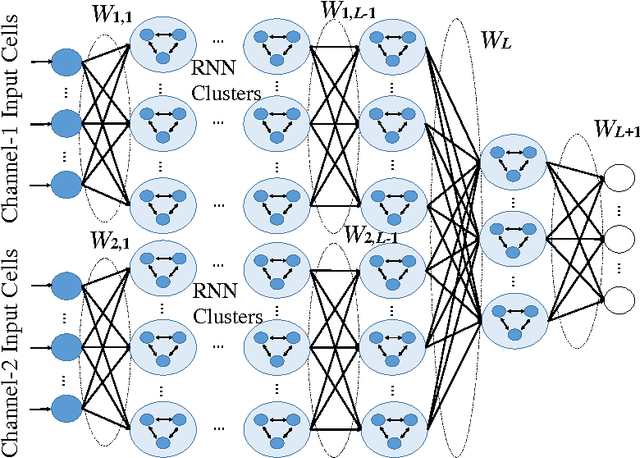
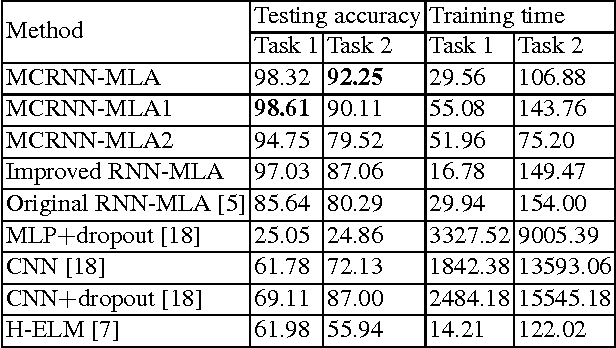
Abstract:We assume that, within the dense clusters of neurons that can be found in nuclei, cells may interconnect via soma-to-soma interactions, in addition to conventional synaptic connections. We illustrate this idea with a multi-layer architecture (MLA) composed of multiple clusters of recurrent sub-networks of spiking Random Neural Networks (RNN) with dense soma-to-soma interactions, and use this RNN-MLA architecture for deep learning. The inputs to the clusters are first normalised by adjusting the external arrival rates of spikes to each cluster. Then we apply this architecture to learning from multi-channel datasets. Numerical results based on both images and sensor based data, show the value of this novel architecture for deep learning.
Nonnegative autoencoder with simplified random neural network
Sep 29, 2016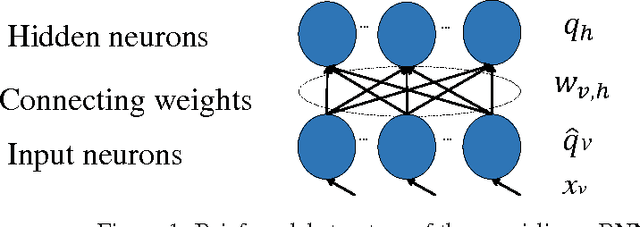
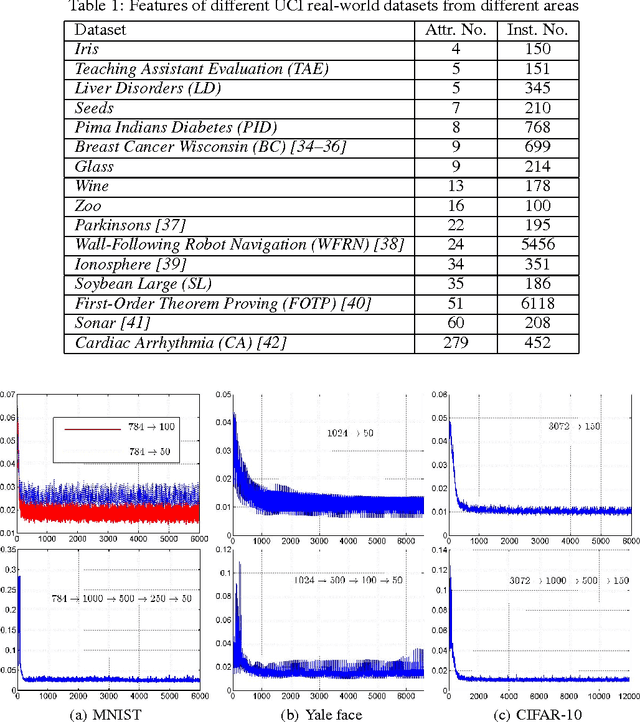
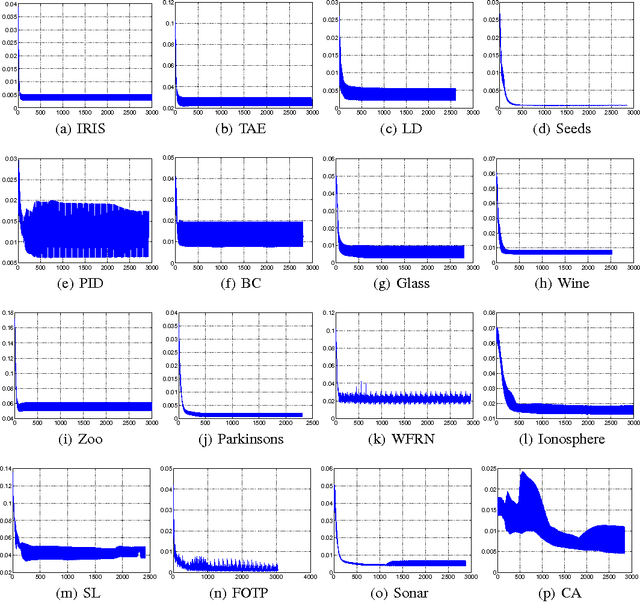
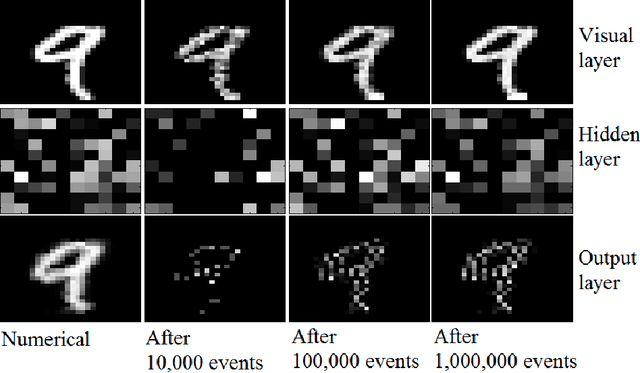
Abstract:This paper proposes new nonnegative (shallow and multi-layer) autoencoders by combining the spiking Random Neural Network (RNN) model, the network architecture typical used in deep-learning area and the training technique inspired from nonnegative matrix factorization (NMF). The shallow autoencoder is a simplified RNN model, which is then stacked into a multi-layer architecture. The learning algorithm is based on the weight update rules in NMF, subject to the nonnegative probability constraints of the RNN. The autoencoders equipped with this learning algorithm are tested on typical image datasets including the MNIST, Yale face and CIFAR-10 datasets, and also using 16 real-world datasets from different areas. The results obtained through these tests yield the desired high learning and recognition accuracy. Also, numerical simulations of the stochastic spiking behavior of this RNN auto encoder, show that it can be implemented in a highly-distributed manner.
Towards a Cognitive Routing Engine for Software Defined Networks
Feb 01, 2016



Abstract:Most Software Defined Networks (SDN) traffic engineering applications use excessive and frequent global monitoring in order to find the optimal Quality-of-Service (QoS) paths for the current state of the network. In this work, we present the motivations, architecture and initial evaluation of a SDN application called Cognitive Routing Engine (CRE) which is able to find near-optimal paths for a user-specified QoS while using a very small monitoring overhead compared to global monitoring which is required to guarantee that optimal paths are found. Smaller monitoring overheads bring the advantage of smaller response time for the SDN controllers and switches. The initial evaluation of CRE on a SDN representation of the GEANT academic network shows that it is possible to find near-optimal paths with a small optimality gap of 1.65% while using 9.5 times less monitoring.
 Add to Chrome
Add to Chrome Add to Firefox
Add to Firefox Add to Edge
Add to Edge